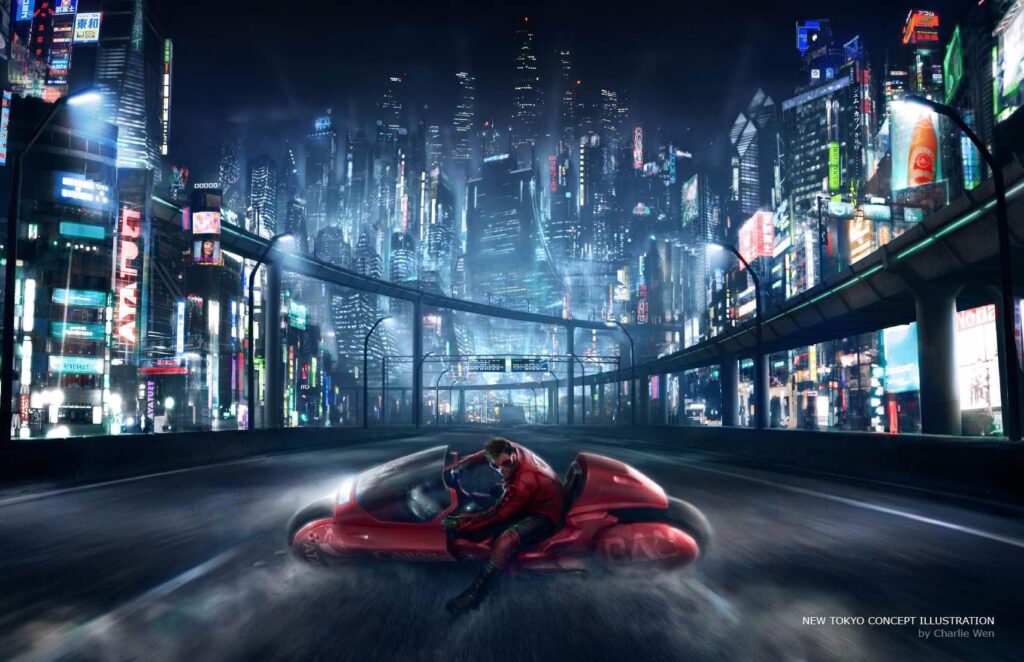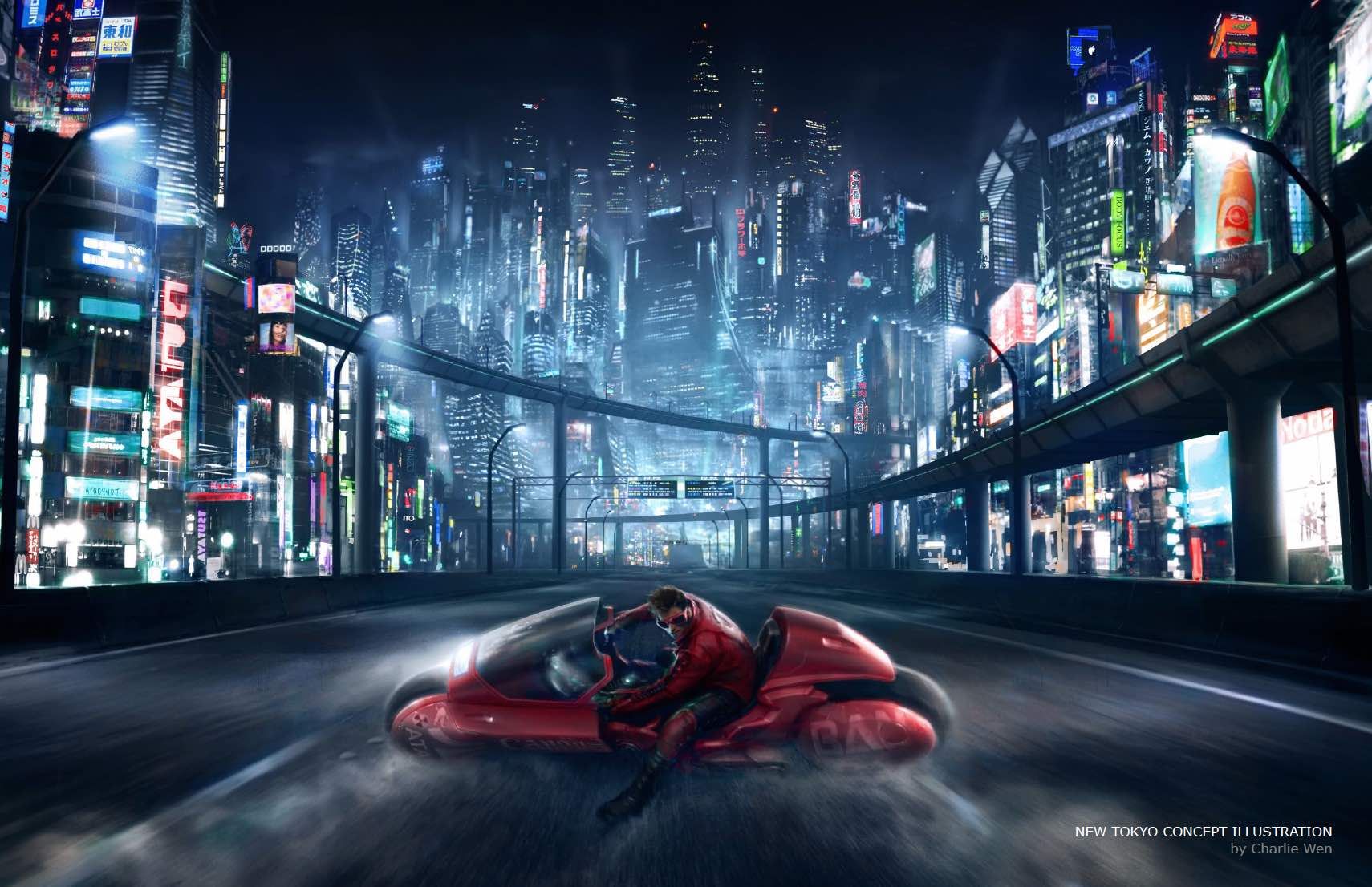
Akira: The Cyberpunk Masterpiece That Defined a Generation
Akira, the iconic 1988 animated film directed by Katsuhiro Otomo, is more than just a movie; it’s a cultural touchstone. This cyberpunk masterpiece has profoundly influenced science fiction, anime, and visual storytelling. Set in a dystopian Neo-Tokyo, rebuilt after a catastrophic explosion, Akira explores themes of societal collapse, government corruption, and the dangers of unchecked scientific advancement. The film’s stunning animation, complex narrative, and powerful symbolism have solidified its place as one of the most important and influential anime films ever made. This article dives into the enduring legacy of Akira and why it continues to resonate with audiences worldwide.
The Birth of a Cyberpunk Icon
Katsuhiro Otomo’s Akira began as a manga series in 1982, published in Young Magazine. The manga, a sprawling epic, quickly gained popularity for its intricate artwork, complex characters, and thought-provoking themes. Otomo then adapted his manga into an animated feature film, a project that pushed the boundaries of animation technology at the time. The film’s production was ambitious, requiring a massive budget and a dedicated team of animators to bring Otomo’s vision to life. The result was a visually stunning and narratively complex film that challenged audiences and redefined the possibilities of anime.
Visual Brilliance and Technological Innovation
One of the defining characteristics of Akira is its breathtaking animation. The film’s visual style is characterized by its meticulous attention to detail, fluid character animation, and dynamic action sequences. Otomo and his team pioneered new animation techniques to achieve a level of realism and visual complexity rarely seen in animated films at the time. The use of pre-scored animation, where the dialogue and sound effects were recorded before the animation was created, allowed for more precise lip-syncing and a greater sense of realism. The film’s vibrant color palette, detailed backgrounds, and innovative camera angles further enhanced its visual impact. The motorcycle sequences, in particular, are a testament to the film’s technical prowess and remain iconic to this day. Akira‘s visual brilliance set a new standard for anime and inspired countless animators and filmmakers.
Plot Summary and Key Themes
Akira is set in 2019 Neo-Tokyo, a city rebuilt after being destroyed by a mysterious explosion. The story revolves around Kaneda, the leader of a biker gang, and his childhood friend Tetsuo. Tetsuo gains psychic powers after a motorcycle accident involving a child esper who escaped from a secret government facility. As Tetsuo’s powers grow, he becomes increasingly unstable and dangerous, threatening to unleash a destructive force that could destroy Neo-Tokyo once again. Kaneda must confront Tetsuo and prevent him from unleashing the full potential of his powers, which are linked to the mysterious entity known as Akira. The film explores themes of government corruption, the dangers of unchecked scientific progress, the power of youth, and the potential for both destruction and redemption.
Government Corruption and Societal Decay
Akira paints a bleak picture of a society plagued by corruption and decay. The government is portrayed as secretive, manipulative, and willing to sacrifice its citizens for its own agenda. The film highlights the dangers of unchecked power and the erosion of individual liberties in the face of government control. The streets of Neo-Tokyo are filled with protests, riots, and social unrest, reflecting the deep-seated dissatisfaction and disillusionment of the population. This portrayal of societal breakdown resonates with contemporary concerns about political corruption and social inequality. The film critiques the blind faith in authority and encourages viewers to question the motives of those in power. [See also: Cyberpunk Dystopias in Film]
The Dangers of Unchecked Scientific Progress
The film also explores the ethical implications of scientific research. The government’s experiments on psychic children, including Akira, highlight the dangers of prioritizing scientific advancement over human welfare. The film suggests that the pursuit of knowledge without ethical considerations can lead to catastrophic consequences. Tetsuo’s uncontrolled psychic powers serve as a metaphor for the potential for scientific discoveries to be used for destructive purposes. The film warns against the hubris of believing that science can solve all problems and emphasizes the importance of responsible innovation. The uncontrolled power that Tetsuo wields is a direct result of the government’s experiments, underscoring this theme.
Akira‘s Influence on Cyberpunk and Beyond
Akira has had a profound and lasting impact on the cyberpunk genre and popular culture. Its visual style, thematic concerns, and narrative complexity have influenced countless films, anime series, video games, and other works of art. The film’s depiction of a dystopian future, technological advancements, and social alienation has become a hallmark of the cyberpunk genre. Akira helped to popularize cyberpunk themes in anime and introduced them to a wider audience. The film’s influence can be seen in works such as Ghost in the Shell, The Matrix, and numerous other science fiction properties. Akira‘s impact extends beyond the cyberpunk genre, inspiring artists and filmmakers across various disciplines.
Visual and Aesthetic Influence
Akira‘s visual style has been widely emulated in other works of art. The film’s detailed backgrounds, dynamic action sequences, and distinctive character designs have become iconic. The use of neon lights, futuristic architecture, and gritty urban landscapes has become a visual shorthand for the cyberpunk genre. The film’s motorcycle designs, in particular, have been highly influential, inspiring similar vehicles in other science fiction works. The film’s aesthetic has also influenced fashion, music, and other aspects of popular culture. The visual language of Akira continues to resonate with artists and designers today. The distinctive look of Neo-Tokyo owes much to Otomo’s visionary approach.
Thematic and Narrative Influence
Akira‘s thematic concerns about government corruption, social unrest, and the dangers of unchecked scientific progress have also been influential. The film’s exploration of these themes has inspired other works to tackle similar issues. The narrative structure of Akira, with its complex characters, multiple plot threads, and ambiguous ending, has also been influential. The film’s willingness to challenge audiences and explore difficult themes has paved the way for more complex and thought-provoking science fiction narratives. The exploration of power, both psychic and political, remains a central theme in many works influenced by Akira.
The Enduring Legacy of Akira
Akira remains a relevant and influential film more than three decades after its release. Its themes of societal collapse, government corruption, and the dangers of unchecked scientific advancement continue to resonate with contemporary audiences. The film’s visual brilliance and narrative complexity ensure that it will continue to be studied and appreciated for generations to come. Akira is not just a film; it’s a cultural artifact that reflects the anxieties and aspirations of its time and continues to challenge and inspire viewers today. The film’s impact on anime, science fiction, and visual storytelling is undeniable. The themes explored in Akira are even more relevant today than they were at the time of its release.
Restorations and Continued Relevance
In recent years, Akira has undergone several restorations to improve its visual and audio quality. These restorations have allowed new audiences to experience the film in its full glory. The film’s continued popularity has also led to new merchandise, adaptations, and re-releases. Akira remains a staple of anime conventions and film festivals around the world. The film’s enduring legacy is a testament to its artistic merit and its ability to connect with audiences on a deep emotional level. The film’s impact is such that even those unfamiliar with anime recognize its iconic imagery. [See also: The Best Cyberpunk Anime of All Time]
Conclusion
Akira is a cinematic triumph that transcends the boundaries of animation and science fiction. Its profound exploration of societal decay, the perils of unchecked power, and the complexities of human relationships has cemented its status as a timeless masterpiece. Katsuhiro Otomo’s visionary direction and the film’s groundbreaking animation techniques have not only influenced countless artists but have also left an indelible mark on popular culture. Akira serves as a potent reminder of the potential consequences of unchecked ambition and the importance of questioning authority. Its enduring legacy is a testament to the power of storytelling and the ability of art to reflect and shape our understanding of the world. Akira is more than just a movie; it is a cultural phenomenon that continues to inspire, challenge, and captivate audiences worldwide. The film’s impact on the cyberpunk genre is undeniable, and its influence can be seen in countless works of art. The enduring appeal of Akira lies in its ability to resonate with audiences on a deep emotional and intellectual level. It is a film that demands to be seen, discussed, and reinterpreted for generations to come. The complex narrative and stunning visuals make Akira a truly unforgettable cinematic experience.

